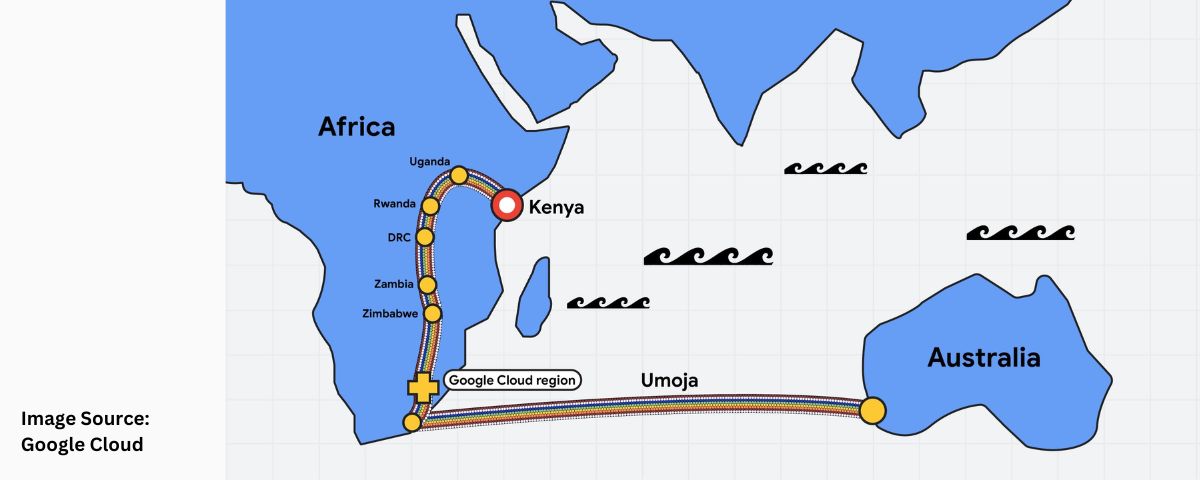
Google is set to build the first subsea fiber-optic cable connecting Africa and Australia. This move comes as major cloud providers compete for business, with Google aiming to catch up with AWS and Microsoft’s Azure. The announcement follows recent widespread outages in Africa caused by faulty undersea cables. Google aims to position itself as a reliable solution for resilient connectivity, crucial for delivering services to consumers and businesses.
The new cable, named “Umoja,” will start in Kenya and traverse the Democratic Republic of the Congo, Rwanda, Uganda, Zambia, and Zimbabwe, ending its land journey in South Africa, where Google’s first African data center region has been operational in Johannesburg since the start of the year. The terrestrial part of the route is already complete, thanks to a collaboration with Liquid Intelligent Technologies. The undersea segment to Perth, Australia, is currently underway, though no completion timeline has been confirmed.
“Umoja will enable African countries to more reliably connect with each other and the rest of the world,” Brian Quigley, Google Cloud’s VP for global network infrastructure, stated in a blog post. He emphasized the importance of establishing new routes distinct from existing ones to maintain a resilient network in a region prone to high-impact outages.
Hundreds of cables span the world’s seas, oceans, and waterways, with tech giants like Amazon, Google, Meta, and Microsoft increasingly investing in this infrastructure. More cables and data centers mean better service quality, such as lower-latency YouTube streams and faster data transfers for cloud-based enterprises.
The closest existing subsea cable route to Umoja’s planned path is SUB.CO’s Oman Australia Cable (OAC), which started operations in 2022. Google has already invested in several cabling projects around Africa, including Equiano, which connects Portugal with Nigeria and South Africa. Earlier this year, Google also announced plans to build one of the first subsea cables connecting South America with Asia-Pacific, running from Chile to Australia via French Polynesia.
While Google hasn’t provided a specific timeline for completing Umoja, a spokesperson mentioned that a typical submarine cable build takes around three years from planning to operational status. Therefore, we can expect the Umoja cable to be ready by around 2026.


